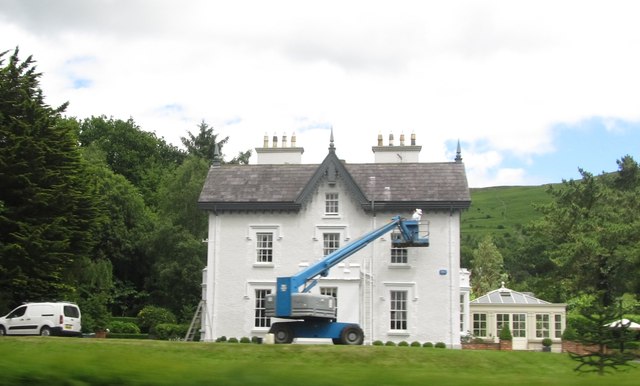Did You Know What is the Best Time for House Painting
by siteadmin

Varieties in weather conditions can affect the nature of paintwork, especially the outside surfaces. Blistering summers and cold winters, dry days and wet days, high mugginess and low stickiness – they all affect painting projects. At Tampa Bay Painting Co, we know the best and most terrible chance to take on canvas work, however, we likewise have the instruments and information to come by the best outcomes, no matter what the season.
The best season for inside and outside painting can likewise rely upon your current circumstance. For instance, on the off chance that you have many trees near your design, getting a work of art group throughout the spring before the leaves have finished up the trees would be a preferred choice over the mid-year, when the foliage disrupts the general flow and is an impediment for the painters.
The best season for inside painting can likewise rely upon various variables, including the sort of paint that is being utilized. Some specialty paints are oil or dissolvable based, and that implies they will radiate a ton of exhaust, so you would have zero desire to apply them during a season when you can't open your windows (very sweltering mid-year days or severe virus cold weather days and evenings). At the point when you converse with your composition worker for hire pretty much every one of the factors, you can make certain about the ideal season to do either outside or inside work.
What do temperature and mugginess mean for paint and painting application
At the point when dampness is in the air (stickiness), there is dampness on your surfaces, prompting a sluggish paint-drying process. Temperature additionally influences how paint dries. Quality work of art project workers know what temperature and mugginess mean for quality and they know how to keep away from unfavorable circumstances.
The impact of surrounding temperature
Paint thickens in low surrounding temperatures, and that implies assuming it's sufficiently cool, the paint never truly dries and you risk having your paint droop or see long runs and additionally wrinkles. Paint is additionally more hard to apply neglected. Most paint producers suggest painting in temperatures somewhere in the range of 50 and 90 degrees, yet top quality brands, similar to Benjamin Moore and Sherwin-Willams have created equations for a portion of their paint that permit painters to take care of their responsibilities in temps as low as 35 degrees.
At the point when temperatures are too hot, the paint dries excessively quick, which prompts knocks and kinks. At the point when it dries too quick the limiting properties in the paint never get a chance to do what they are intended to do, subsequently the kinks and air pockets or rankles. This is particularly obvious when the surfaces are in direct daylight on hot days.
The impact of relative mugginess
Relative stickiness assumes a part in how paint sticks to surfaces. For instance, when the mugginess is high, surface regions are presented to water fume, and when paint is applied on top of that dampness, you'll get gurgling or potentially stripping paint accordingly.
The favored dampness is somewhere in the range of 40 and 70 percent, since this is inside the reach that paint can appropriately stick to surfaces.
The impact of wind
On the off chance that you see a breaking or rankling paint on a surface, it's not generally a result of intensity, mugginess or age – it very well may be a consequence of paint applied on a breezy day. Paint needs time to fix, yet in the event that you're painting in the breeze, rather than getting a gradual dry/fix north of a 24-hour term, the paint dries excessively quick and doesn't as expected stick to the surface.
At Tampa Bay Painting CO, we realize that work of art in breezes surpassing a delicate breeze, around 8 mph, is an ill-conceived notion and will just deliver issues down the line.
The Florida region's optimal weather patterns for painting
Inside painting projects are generally not an issue in light of the fact that most insides are environment controlled. Be that as it may, warming and cooling frameworks affect dampness, which should be observed.
Outside painting projects in Florida are helpless before Midwestern climate limits. Normal winter temps from December through February are around 28 degrees – excessively cold for outside painting projects. Normal temps in the spring become more agreeable to painting, ascending from 37 degrees in Spring to a normal of 59 degrees in May.
At Tampa Bay Painting CO, the majority of our outside painting projects are taken on throughout the late spring months, however, are required to be postponed when Florida gets the impact heater experience during fierce intensity waves. Temperatures start to drop in September and October, yet are still in an OK reach for painting
Varieties in weather conditions can affect the nature of paintwork, especially the outside surfaces. Blistering summers and cold winters, dry days and wet days, high mugginess and low stickiness – they all affect painting projects. At Tampa Bay Painting Co, we know the best and most terrible chance to take on canvas work, however, we…
Recent Posts
- Why You Should Invest in a Salon Treatment for Your Hair in Houston
- Sophisticated Exterior Painting Methods: Advice for a Perfect Coat
- Lou’s Painting Company Sets New Standard for “Above and Beyond” Painting Services
- Supreme Coats Painting and Epoxy: Redefining Home Painting in Lapeer, Oxford, and Lake Orion
- Exploring the Drawbacks of Duct Cleaning: Insights from Air Vent Cleaning Charlotte
